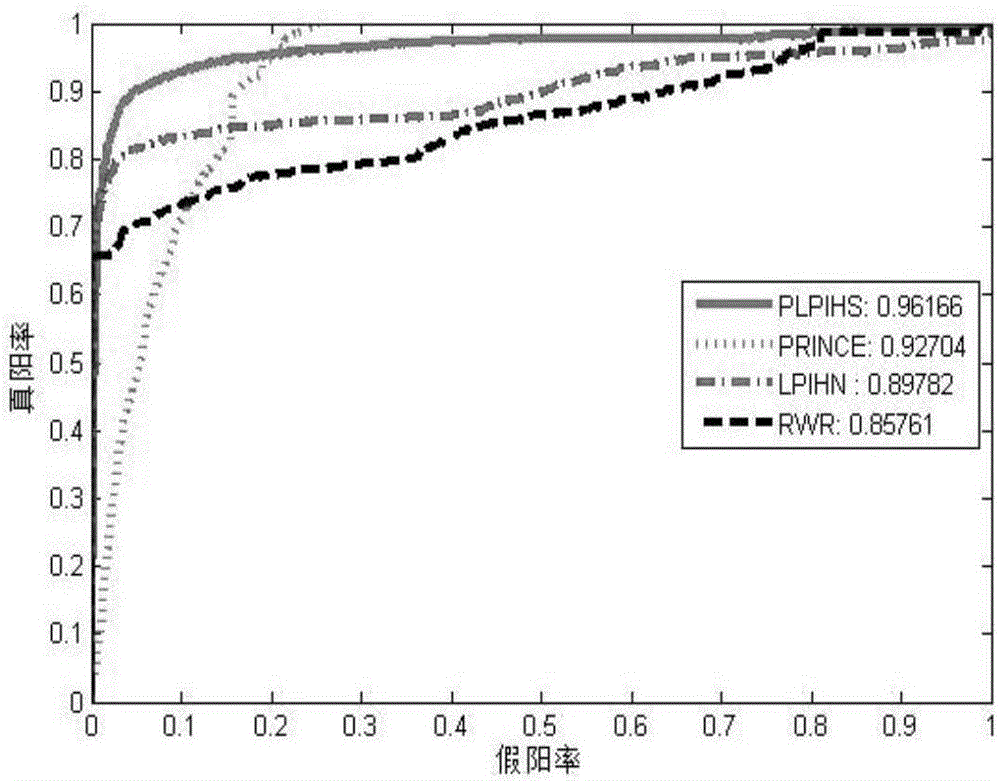Method and system for predicting association between long non-coding RNA and protein
A long-chain non-coding, protein technology, used in proteomics, special data processing applications, instruments, etc., can solve the problems of high cost and long time for the interaction between lncRNA and protein, saving experimental costs and ensuring The effect of accuracy
- Summary
- Abstract
- Description
- Claims
- Application Information
AI Technical Summary
Problems solved by technology
Method used
Image
Examples
Embodiment 1
[0031] This embodiment discloses a method for predicting the connection between long non-coding RNA and protein, such as figure 1 shown, including:
[0032] Step S1, constructing subnetwork 1 of lncRNA-protein interaction, subnetwork 2 of lncRNA-lncRNA interaction and subnetwork 3 of protein-protein interaction.
[0033] Step S2. Combining the first subnet, the second subnet and the third subnet into a global heterogeneous network.
[0034] Step S3, determining at least two walking paths for any lncRNA to establish contact with any protein in the global heterogeneous network; any walking path connects subnetwork one with at least one of subnetwork two and subnetwork three.
[0035] In this step, usually, if the studied walking path is too complicated, the potential connection between the source end and the sink end corresponding to the corresponding walking path is smaller, which is less meaningful to the research, and it also increases The complexity of data processing, the...
Embodiment 2
[0052] Corresponding to the above method embodiments, this embodiment provides a system for predicting the association between long non-coding RNA and protein, including the following first to fifth processing modules. The functional scores for each module are as follows:
[0053] The first processing module is used to construct subnetwork one of lncRNA-protein interconnection, subnetwork two of lncRNA-lncRNA interconnection and subnetwork three of protein-protein interconnection;
[0054] The second processing module is used to combine the first subnet, the second subnet and the third subnet into a global heterogeneous network;
[0055] The third processing module is used to determine at least two walking paths for any lncRNA to establish contact with any protein in the global heterogeneous network; any walking path connects subnet one with at least one of subnet two and subnet three in series;
[0056] The fourth processing module is used to calculate the HeteSim score of ...
PUM
 Login to View More
Login to View More Abstract
Description
Claims
Application Information
 Login to View More
Login to View More - R&D
- Intellectual Property
- Life Sciences
- Materials
- Tech Scout
- Unparalleled Data Quality
- Higher Quality Content
- 60% Fewer Hallucinations
Browse by: Latest US Patents, China's latest patents, Technical Efficacy Thesaurus, Application Domain, Technology Topic, Popular Technical Reports.
© 2025 PatSnap. All rights reserved.Legal|Privacy policy|Modern Slavery Act Transparency Statement|Sitemap|About US| Contact US: help@patsnap.com



